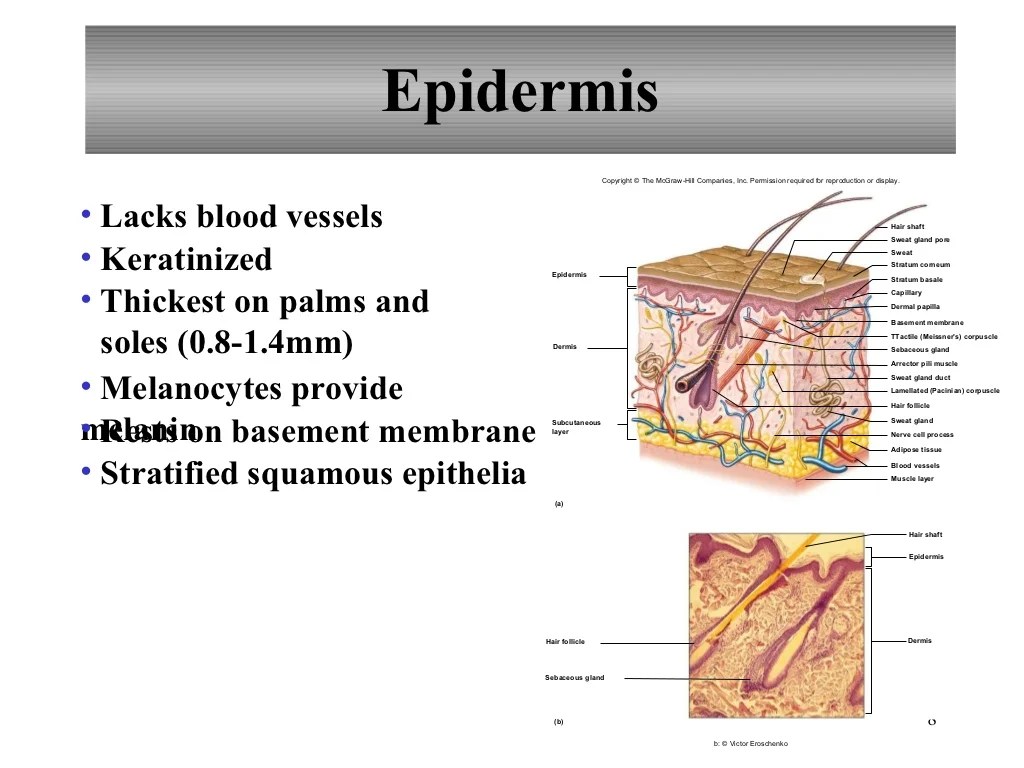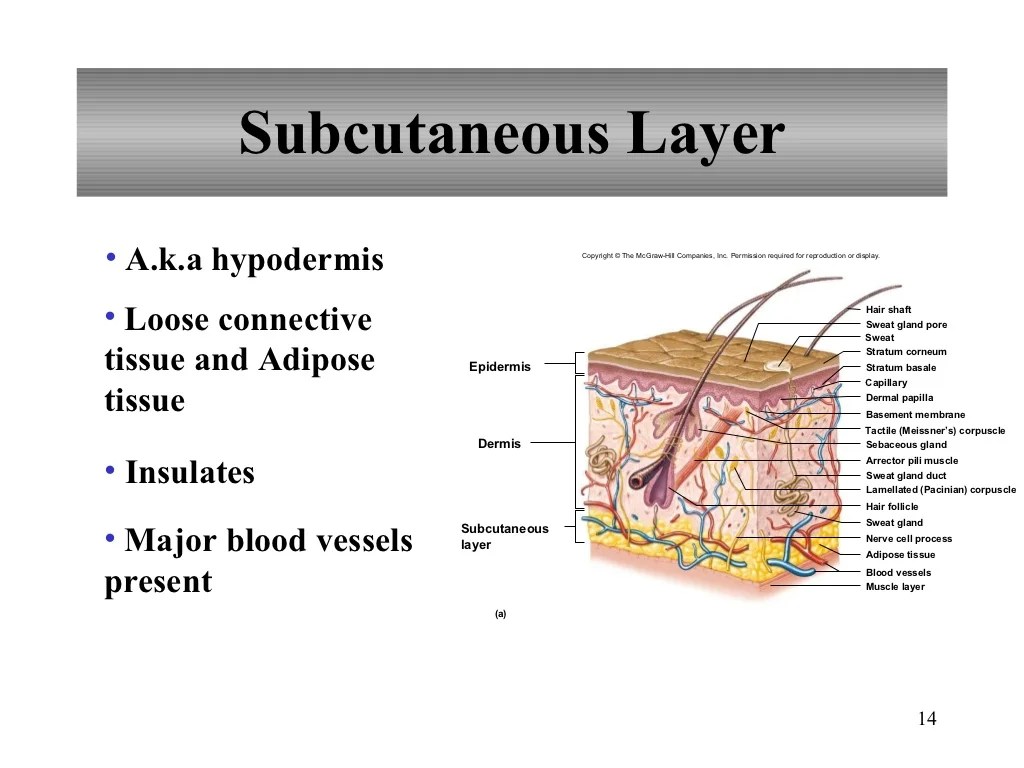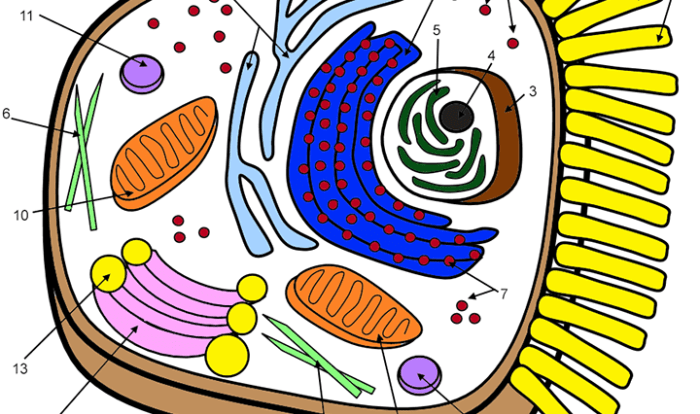Chapter 18 the integumentary system – As we delve into Chapter 18: The Integumentary System, we embark on an enthralling journey to unravel the secrets of our skin, the body’s first line of defense. This intricate system plays a vital role in our overall health and well-being, and its functions extend far beyond mere aesthetics.
Throughout this chapter, we will explore the diverse layers of the skin, each with its unique contributions to our protection, temperature regulation, and sensory perception. We will also delve into the fascinating world of skin appendages, including hair, nails, and sweat glands, and uncover their essential functions.
Structure of the Integumentary System
The integumentary system is the largest organ system in the human body, composed of the skin, hair, nails, and sweat glands. The skin, the largest component, is a complex organ with multiple layers, each with distinct functions.
Layers of the Skin
The skin is divided into three primary layers: the epidermis, dermis, and hypodermis.
- Epidermis:The outermost layer, the epidermis, is composed of keratinized cells that provide protection against the external environment. It also contains melanocytes, which produce melanin, the pigment responsible for skin color.
- Dermis:The middle layer, the dermis, is composed of connective tissue, blood vessels, and nerve endings. It provides structural support, elasticity, and houses various structures such as hair follicles, sweat glands, and sebaceous glands.
- Hypodermis:The deepest layer, the hypodermis, is composed of fat cells and connective tissue. It provides insulation, cushioning, and energy storage.
Each layer of the skin plays a crucial role in maintaining the overall health and function of the integumentary system.
Functions of the Integumentary System

The integumentary system serves a multitude of vital functions that contribute to the overall health and well-being of the organism. These functions encompass protection, thermoregulation, and sensory perception.
Protective Functions
The integumentary system acts as a formidable barrier against external threats, safeguarding the underlying tissues and organs from physical damage, chemical irritants, and microbial invasion. The outermost layer of the skin, the epidermis, is composed of tightly packed cells that create a watertight seal, preventing the entry of pathogens and foreign substances.
Furthermore, the skin contains specialized cells that produce antimicrobial peptides and proteins, providing an active defense against invading microorganisms. The presence of melanin, a pigment produced by melanocytes, shields the skin from the harmful effects of ultraviolet (UV) radiation, reducing the risk of skin damage and cancer.
Thermoregulatory Functions
The integumentary system plays a crucial role in maintaining body temperature within a narrow optimal range. The skin’s insulating properties, primarily due to the subcutaneous fat layer, prevent excessive heat loss during cold conditions. Conversely, when the body temperature rises, blood vessels in the skin dilate, increasing blood flow to the skin’s surface and facilitating heat dissipation through sweating.
Sweat glands, distributed throughout the skin, secrete a watery fluid that evaporates, drawing heat away from the body. This evaporative cooling mechanism is essential for regulating body temperature during physical activity and exposure to hot environments.
Sensory Functions
The integumentary system serves as a sensory interface between the body and the external environment. Specialized nerve endings embedded in the skin detect various stimuli, including touch, pressure, temperature, and pain. These sensory receptors transmit information to the central nervous system, enabling the organism to perceive and respond appropriately to external stimuli.
The skin’s sensitivity to touch is mediated by tactile receptors, which can distinguish between different types of touch, such as light pressure, vibration, and coarse contact. Pressure receptors, located deeper in the skin, sense mechanical force and contribute to our ability to perceive objects’ weight and shape.
Thermoreceptors, distributed throughout the skin, detect changes in temperature, allowing us to sense hot and cold sensations. Pain receptors, activated by intense stimuli, signal potential threats to the body, triggering protective responses such as withdrawal reflexes.
Skin Appendages: Chapter 18 The Integumentary System
The skin appendages are structures that extend from the skin’s surface. They play vital roles in protecting and maintaining the body’s homeostasis.
Hair, Chapter 18 the integumentary system
Hair is a protein filament that grows from the skin’s hair follicles. It protects the skin from UV radiation, cold, and physical damage. Hair also plays a role in sensory perception and communication.
Nails
Nails are hard, keratinized structures that cover the tips of the fingers and toes. They protect the fingers and toes from injury and provide a firm grip. Nails also help in manipulating objects.
Sweat Glands
Sweat glands are small, coiled tubes that secrete sweat onto the skin’s surface. Sweat helps regulate body temperature by evaporating from the skin. It also removes waste products and helps maintain the skin’s pH balance.
Skin Disorders
The integumentary system is prone to various disorders that can affect its structure and function. These disorders can range from common skin conditions to more severe and debilitating diseases.
Understanding the symptoms, causes, and treatment options for these disorders is crucial for maintaining healthy skin and addressing any underlying health issues.
Acne
- Symptoms:Acne is characterized by the formation of pimples, blackheads, and whiteheads on the skin, primarily on the face, chest, and back.
- Causes:Acne is caused by a combination of factors, including hormonal changes, bacteria, and excess oil production. It is common during puberty and adolescence but can also affect adults.
- Treatment:Treatment for acne typically involves topical medications, such as retinoids or antibiotics, to reduce inflammation and kill bacteria. In severe cases, oral medications or hormonal therapy may be necessary.
Eczema
- Symptoms:Eczema is a chronic skin condition that causes dry, itchy, and inflamed skin. It can appear in patches or cover large areas of the body.
- Causes:Eczema is often caused by a combination of genetic and environmental factors, such as allergies, irritants, and stress.
- Treatment:Treatment for eczema aims to reduce inflammation and relieve symptoms. It may include topical corticosteroids, moisturizers, and lifestyle modifications, such as avoiding triggers and managing stress.
Psoriasis
- Symptoms:Psoriasis is a chronic autoimmune disorder that causes raised, red, and scaly patches on the skin. It can affect any part of the body, including the scalp, elbows, knees, and trunk.
- Causes:Psoriasis is caused by an overactive immune system that triggers the rapid growth of skin cells. The exact cause is unknown, but genetics and environmental factors are believed to play a role.
- Treatment:Treatment for psoriasis focuses on controlling the overactive immune response and reducing inflammation. It may include topical medications, light therapy, oral medications, and lifestyle modifications.
Skin Care

Maintaining healthy skin requires a combination of sun protection, hydration, and proper skincare practices. By following these tips, you can help keep your skin looking its best.
Sun Protection
One of the most important things you can do for your skin is to protect it from the sun’s harmful UV rays. UV radiation can damage the skin’s DNA, leading to premature aging, wrinkles, and even skin cancer. To protect your skin from the sun, it is important to:
- Wear sunscreen with an SPF of 30 or higher every day, even on cloudy days.
- Reapply sunscreen every two hours, or more often if you are swimming or sweating.
- Seek shade during the peak hours of sunlight, between 10am and 4pm.
- Wear protective clothing, such as long sleeves, pants, and a hat, when you are outdoors.
Hydration
Keeping your skin hydrated is essential for maintaining its health and appearance. When your skin is dehydrated, it can become dry, flaky, and irritated. To keep your skin hydrated, it is important to:
- Drink plenty of water throughout the day.
- Use a moisturizer to help keep your skin hydrated.
- Avoid harsh soaps and detergents, which can strip your skin of its natural oils.
Skincare Products
There are a variety of skincare products available that can help to improve the health and appearance of your skin. Some of the most common skincare products include:
- Moisturizers help to keep your skin hydrated.
- Cleansers help to remove dirt, oil, and makeup from your skin.
- Toners help to balance the pH of your skin.
- Serums are concentrated treatments that can target specific skin concerns, such as wrinkles, fine lines, or acne.
Advanced Topics in Integumentary System
The integumentary system is a complex and diverse organ system that plays a crucial role in maintaining homeostasis, protecting the body from external threats, and facilitating sensory perception. In this section, we will explore some advanced topics related to the integumentary system, including key differences between human skin and the skin of other mammals, the latest advancements in skin research, and a hypothetical experiment to investigate the effects of UV radiation on skin health.
Key Differences Between Human Skin and the Skin of Other Mammals
Human skin exhibits several unique characteristics that distinguish it from the skin of other mammals. The following table summarizes some of the key differences:
| Characteristic | Human Skin | Skin of Other Mammals |
|---|---|---|
| Hair density | Lower hair density | Higher hair density |
| Sweat glands | More numerous and efficient | Fewer and less efficient |
| Sebaceous glands | More numerous and active | Fewer and less active |
| Epidermal thickness | Thicker epidermis | Thinner epidermis |
| Dermis thickness | Thicker dermis | Thinner dermis |
| Subcutaneous fat | More subcutaneous fat | Less subcutaneous fat |
Latest Advancements in Skin Research
Skin research is a rapidly growing field, with new advancements emerging all the time. Some of the latest advancements include:
- Development of new skin care products that are more effective and less irritating.
- Improved understanding of the role of the microbiome in skin health.
- Development of new technologies for treating skin diseases, such as laser therapy and stem cell therapy.
- Increased understanding of the genetic basis of skin diseases.
- Development of new methods for skin cancer detection and prevention.
Hypothetical Experiment to Investigate the Effects of UV Radiation on Skin Health
UV radiation is a major risk factor for skin cancer and other skin problems. To investigate the effects of UV radiation on skin health, we could conduct a hypothetical experiment with the following steps:
- Recruit a group of healthy volunteers.
- Randomly assign the volunteers to one of two groups: an experimental group that will be exposed to UV radiation and a control group that will not be exposed to UV radiation.
- Expose the experimental group to UV radiation for a controlled period of time.
- Monitor the skin of the volunteers in both groups for signs of damage, such as sunburn, wrinkles, and skin cancer.
- Compare the results between the experimental group and the control group to determine the effects of UV radiation on skin health.
Question Bank
What are the three layers of the skin?
Epidermis, Dermis, Hypodermis
What is the primary function of the skin?
Protection against pathogens, UV radiation, and other environmental factors
What are some common skin disorders?
Acne, eczema, psoriasis
How can we maintain healthy skin?
Sun protection, hydration, proper cleansing
